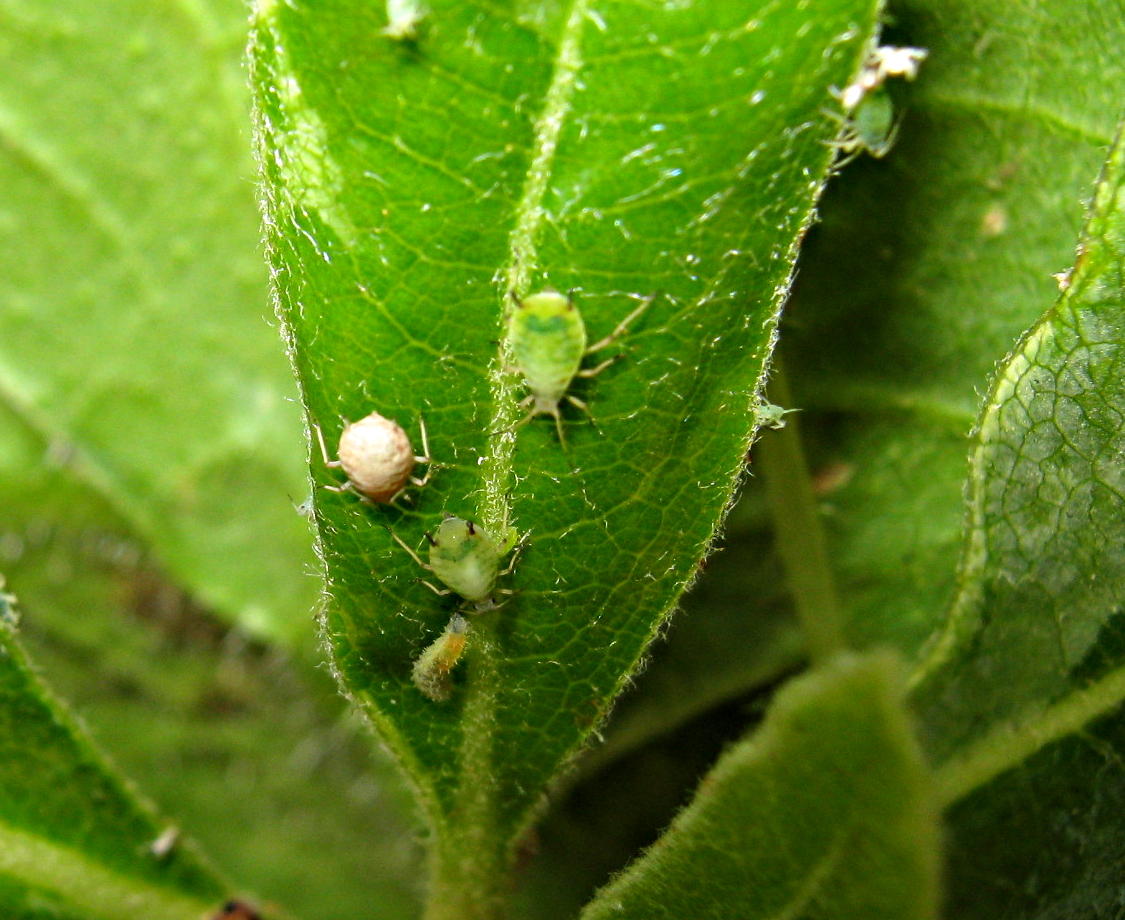
Aphids under attack!
Aphids are common in early summer on landscape shrubs. Shown here on a leaf of Pittosporum tobira, the aphid on the left has been mummified and has larva of a small wasp (Aphidius species) inside it. The one to the right is healthy -- for now. The aphid at the bottom of the photo is about to meet its demise at the hands (or jaws) of an aphid midge larva (undetermined, but probably Aphidoletes species).
|
Letting nature run its course is a valid strategy for pest and disease management in the garden!
Some beneficials |
| click on any picture for a larger view |
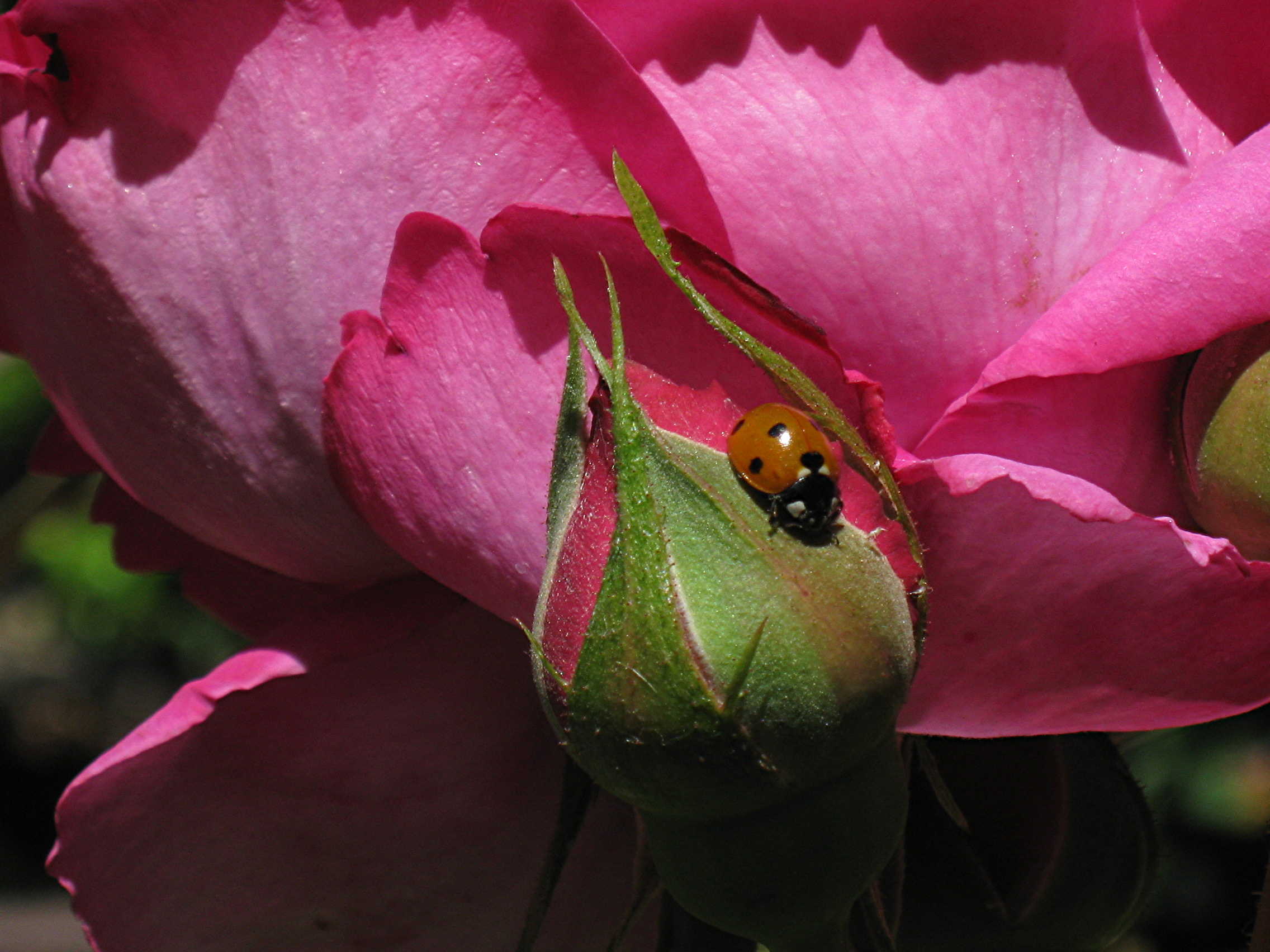
Ladybird beetle on a rose bud
|
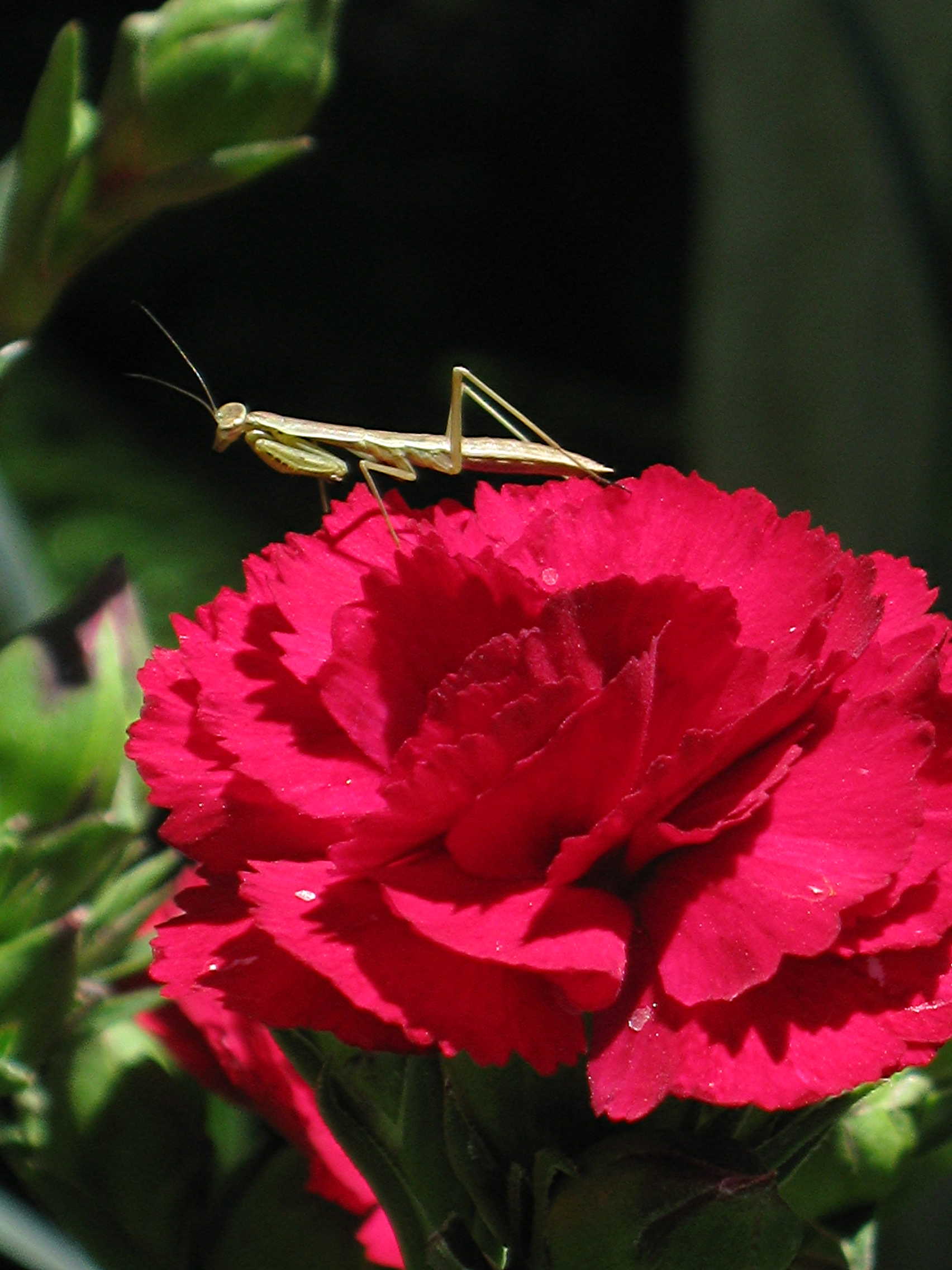
Young praying mantid on a Dianthus
|
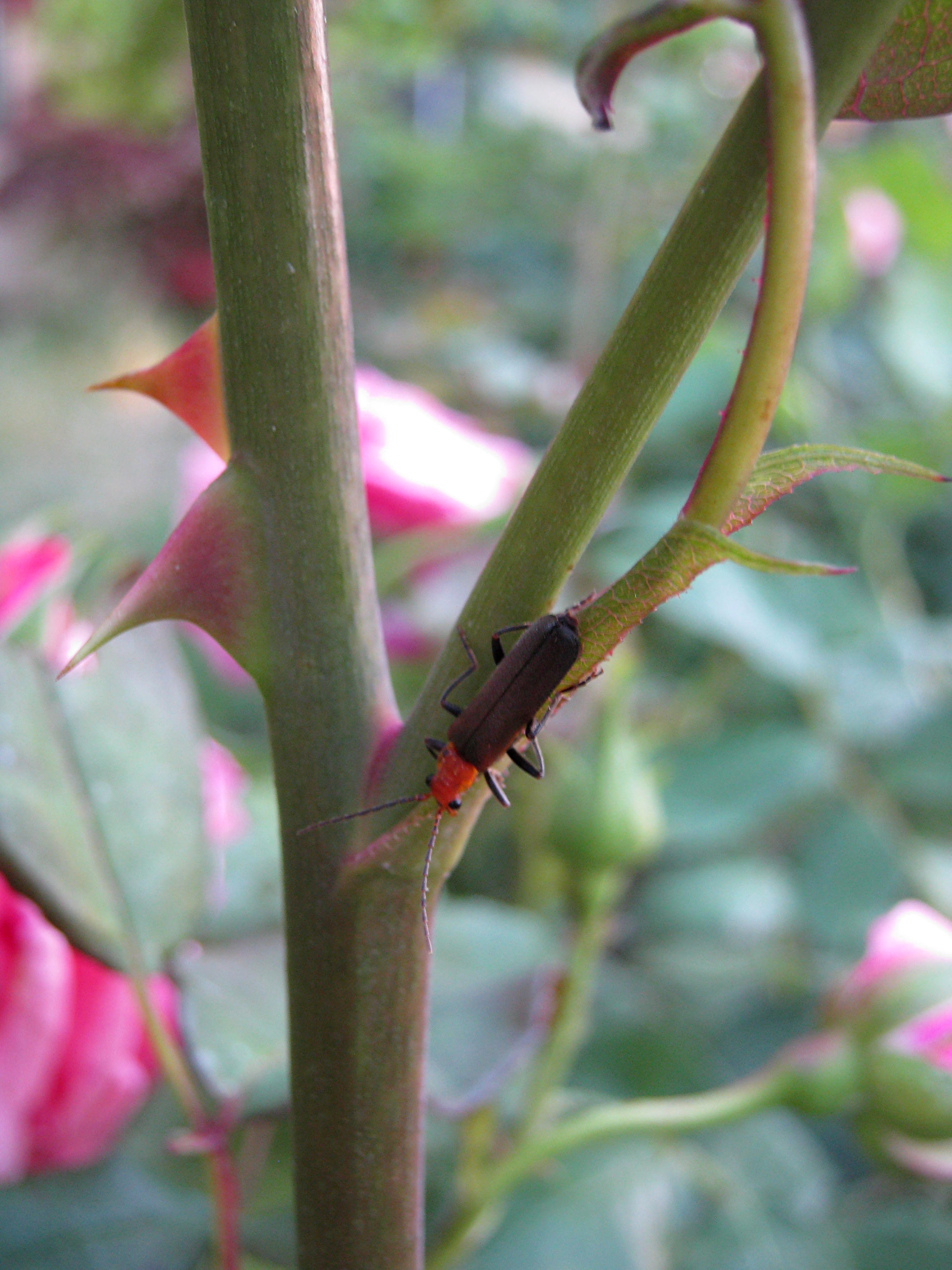
Leatherwing (soldier) beetle
|
Reaching for broad-spectrum insecticides and fungicides is rarely necessary and often does more harm than good.
For example, there have been a lot of fungus problems on leaves of shrubs and trees during this wet spring, especially on roses.
Fungus disease symptoms show up when the pathogen, the host, and the environment interact to cause the disease to inoculate, establish, and spread. We are fortunate to live in a climate which is usually unfavorable to the continued spread of fungus. A couple of days of dry north wind can stop most diseases in their tracks. You can prune an infected plant to “open it up” and allow better air movement; water early in the day to allow leaves to dry off, and make sure you have the plant in the right sun exposure. Roses in the shade, watered with sprinklers, and allowed to get overgrown are going to get a lot more disease problems than those planted in the sun, pruned properly, and watered at ground level.
As for aphids, there is outright warfare going on in your garden, though you'd practically need a magnifying glass to see it. Why poison the plants when beneficial insects are riding in like cavalry to the rescue?
Life as an aphid is actually pretty rough. When you get an infestation, it seems they have come out of nowhere. Indeed, a female aphid produces 50 or more babies a day, and each baby is a pregnant female. They NEED this massive reproductive capability because so many beneficial insects find them delectable: aphids are soft, succulent, and stuck in place.
Three beneficial insects that you can see readily are ladybird beetles (ladybugs), lacewings, and leatherwing beetles (aka soldier beetles). The larvae of the first two resemble little dragons, inching along on rose buds and plum leaves as they eat aphids. Ladybird beetles and leatherwing beetles fly around, roving rapidly over leaves and flowers.
The aphids that we see in summer are often naturally controlled by parasitoid wasps and by the larva of small flies.
Note: the terms parasite and parasitoid are similar. The difference is that a parasite usually doesn't kill the host, it just lives on it and takes nutrients from it (think tapeworms and mistletoe). A parasitoid lives on or in the host and ultimately kills it. The adult usually lives free of the host.
If you look closely at any population of aphids you are likely to see some that are tan, listless, and bloated. If so, you need take no further action: tiny parasitoid wasps (usually aptly named Aphidius species) have laid their eggs in some of the aphids. The larvae are feeding on the aphid from inside, getting ready to pupate and emerge and further decimate the population. Those that have emerged leave behind aphid carcasses with neat holes cut in them. After a slight lag, the population of wasps will catch up with the aphids. It is rare to see the adult wasps, and they can't sting you. These little wasps are everywhere; I rarely see a population of summer aphids that isn't being controlled by them.
You may also find very small worm-like larvae near the aphids. These are the progeny of tiny flies called aphid midges (Aphidoletes species). Each midge has strong jaws and eats several aphids before pupating. Apparently they like to hunt: they often kill many more aphids than they eat. The problem is, the adults midges are very readily killed by pesticides. So to encourage this beneficial insect you need to stop spraying.
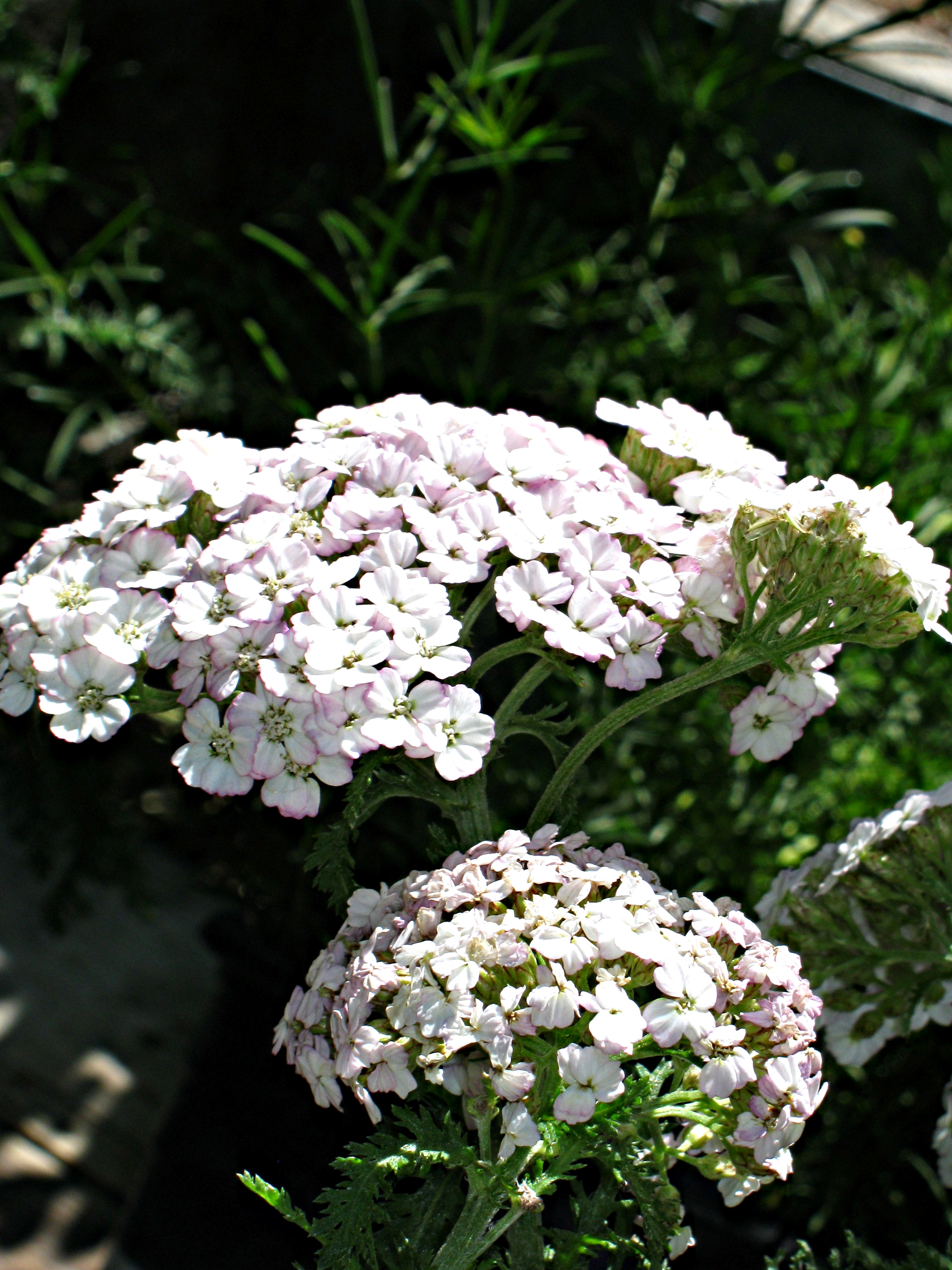 Achillea
Achillea 'Apple Blossom'
These beneficial insects don't just eat pests. The adults need food and water too. Small areas such as shallow stones or abalone shells where sprinkler water can puddle can provide moisture. Honeydew from the tiny flowers of annuals such as Sweet alyssum draw and feed many beneficials. Any flowering plants in the carrot family (Umbelliferae), including cilantro, fennel, parsley, and Queen Anne's lace will help attract them. Members of the daisy family provide pollen, which many feed on. One of the best is yarrow (Achillea species and hybrids), an easy perennial with showy clusters of tiny flowers, known to attract many types of beneficial insects. Yarrow spreads readily and is very long-lived, tolerating full sun or light shade and some drought.
You can plant flowers and create habitat for natural enemies. Or you can apply poisons with unintended consequences. The choice seems simple to me!
The Davis Garden Show broadcasts live at KDRT 95.7 FM Thursdays from noon to 1 (call-in questions are welcome), and rebroadcasts on Saturday mornings from 9 - 10. All the programming at KDRT is available to download at kdrt.org as well as davisgardenshow.com. We can also be found at iTunes: search for Davis Garden.
© 2010 Don Shor, Redwood Barn Nursery, Inc., 1607 Fifth Street, Davis, Ca 95616
www.redwoodbarn.com
Feel free to copy and distribute this article with attribution to this author.
Click here for Don's other Davis Enterprise articles
